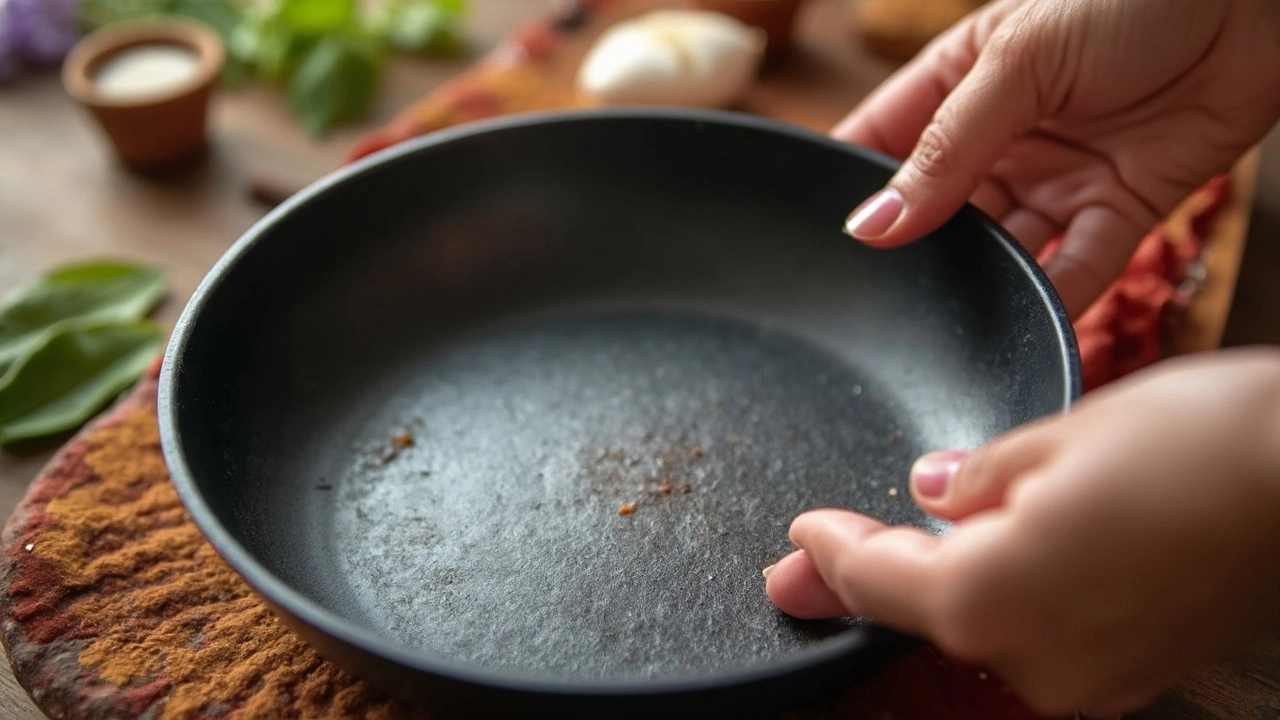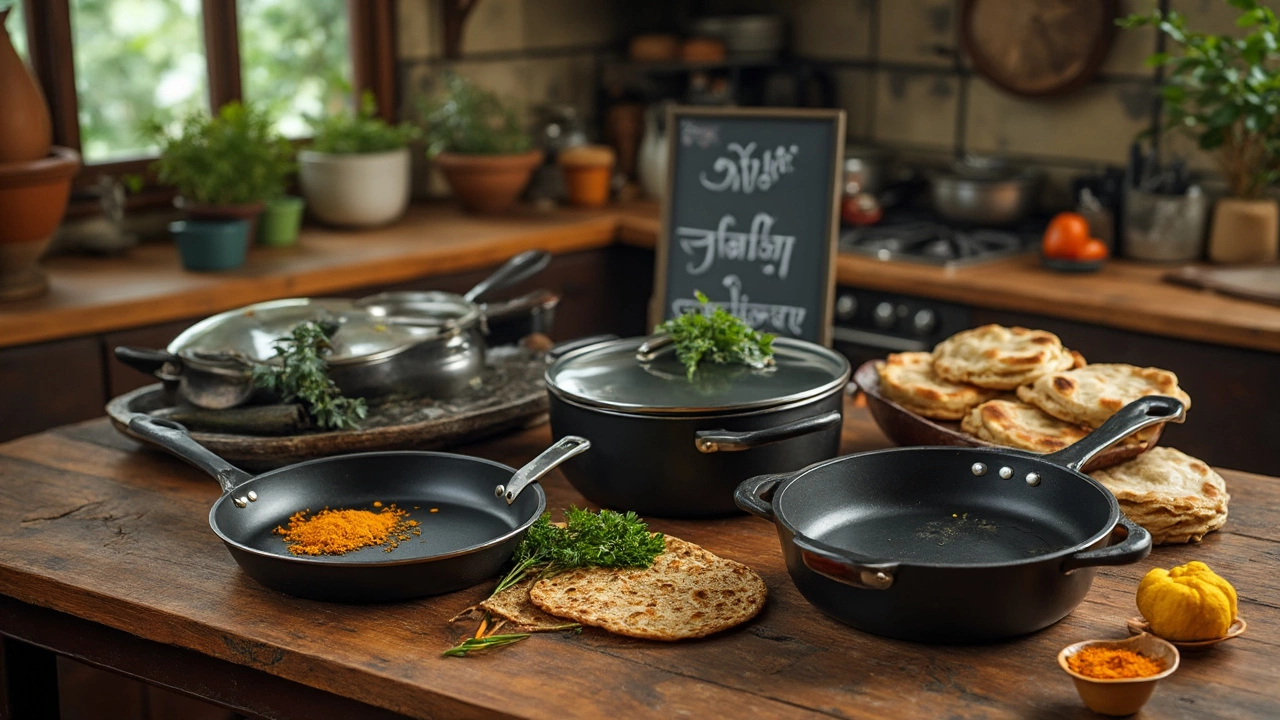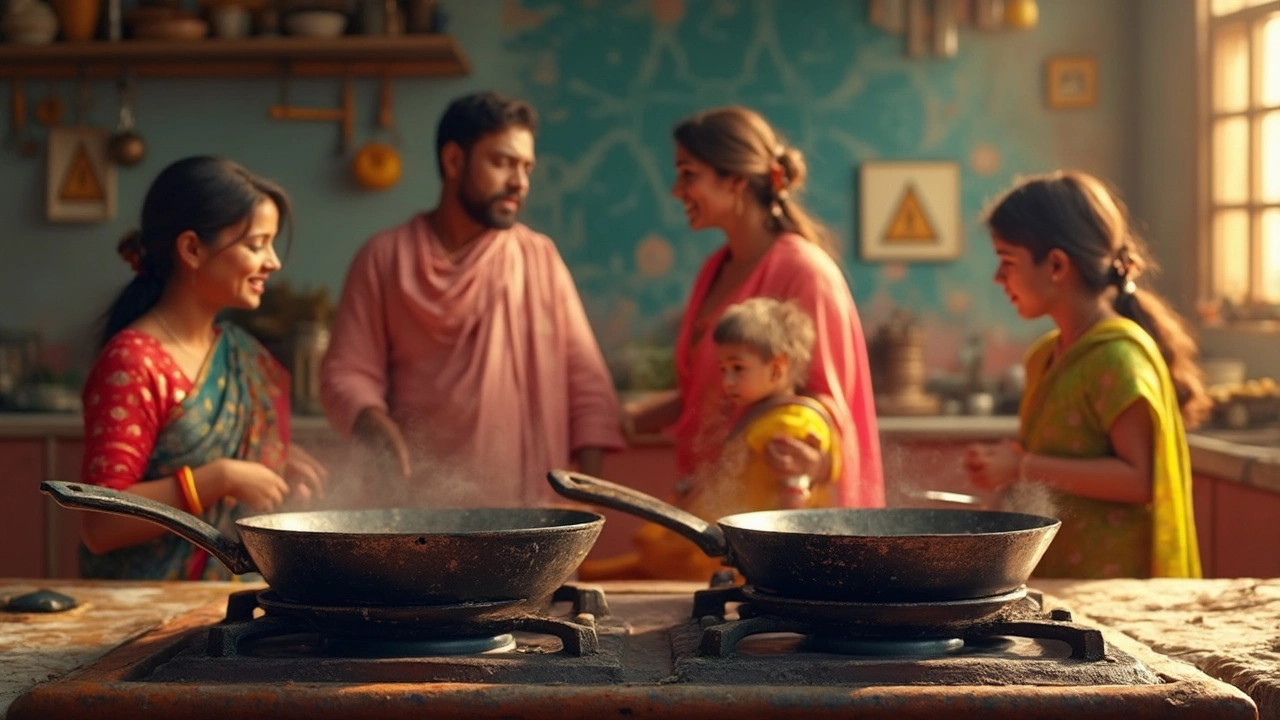People toss the word "Teflon" around whenever talking about nonstick pans, but do you know manufacturers actually changed how they made these pans not so long ago? It all comes down to a chemical called PFOA, which stuck around in Teflon coatings for decades. Wondering if you've got the risky kind in your kitchen?
This isn't just about being a little safer—it could seriously affect your health if you hang on to older pans. The switch started when studies linked PFOA to a range of nasty health problems, and regulators worldwide took notice. Most folks want their eggs to slide off the pan, not worry about invisible toxins leaching into breakfast.
Before you panic and toss all your nonstick pans out the window, let's clear up what's changed and when. Not every Teflon pan is a hazard, but you do need to know the cutoff year when things got safer. Plus, some tips make caring for your nonstick pans easier and your cooking more worry-free.
- The Origin of Teflon Pans
- Why Teflon Got a Bad Rap
- The Year Manufacturers Changed Course
- Spotting Safe vs. Old Nonstick Pans
- Smart Tips for Nonstick Cooking
The Origin of Teflon Pans
If you’re using a nonstick pan today, you’re probably cooking on a direct result of a kitchen accident turned into a billion-dollar idea. Teflon pans started with a mistake in a DuPont lab way back in 1938, when a chemist named Roy Plunkett was actually trying to make something totally different—new refrigerants. Instead, he got a slippery white powder that didn’t react with much and wouldn’t even stick to metal.
That “useless” powder? It was polytetrafluoroethylene, or PTFE. DuPont trademarked it as “Teflon” in 1945. At first, it wasn’t even about cooking—Teflon was used for coating valves and pipes in WWII-era projects because nothing would stick to it, not even acid. It wasn’t until the 1950s that folks realized Teflon could totally change how people cook. The first Teflon pans aimed at home kitchens popped up in the U.S. in 1961 under the brand name “The Happy Pan.”
Why did everyone go nuts for Teflon? You didn’t need a ton of butter or oil, food slid right off, and cleaning up took way less elbow grease. In the late 20th century, nonstick cookware was seen as a miracle for busy families and folks who hated scrubbing—so honestly, pretty much everyone.
| Year | Milestone |
|---|---|
| 1938 | PTFE discovered by Roy Plunkett at DuPont |
| 1945 | Teflon trademark registered by DuPont |
| 1961 | First Teflon-coated nonstick pans for consumers sold in U.S. |
Teflon’s rise made nonstick cookware as common in kitchens as spatulas, but no one was worried about chemicals until years later. At first, it was all about convenience and saving time, and the idea of harmless, slick pans sounded pretty great to everyone.
Why Teflon Got a Bad Rap
Here’s the deal: Teflon pans weren’t always just about mess-free eggs and quick cleanup. For years, the nonstick coating was made using a chemical called PFOA (perfluorooctanoic acid). Nobody paid much attention to it at first, but problems started popping up when people realized PFOA didn’t break down in the environment—or your body. It would just hang around, building up over time. That’s when things got sketchy.
Through the 1990s and 2000s, researchers began linking PFOA to all sorts of health issues. We’re talking stuff like increased risk of cancer, thyroid problems, immune issues, and even low birth weight in babies. The Environmental Protection Agency (EPA) stepped in after studies pointed to health risks even when people were exposed to small amounts over the years.
The heat only got turned up (pun totally intended) when they discovered that heating old or damaged nonstick cookware could make Teflon coating break down, releasing toxic fumes. These fumes could actually make pet birds sick—a reason why some vets have signs up warning you not to use old nonstick pans if you have feathered friends at home.
It wasn’t just wild rumors. Lawsuits and EPA investigations pushed manufacturers to change how they made Teflon pans. So in the early 2000s, the big companies signed a deal to phase out PFOA entirely by 2015. If you love nerdy facts, here’s a quick look at what PFOA could do:
| Potential Health Effects | Source |
|---|---|
| Cancer risk (kidney, testicular) | CDC, 2017 |
| Immune system impact | EPA, 2016 |
| Thyroid disruption | National Institutes of Health, 2018 |
| Developmental issues (infants/kids) | Environmental Working Group, 2019 |
Because of these real concerns, the kitchenware world had to get serious about making nonstick cookware safer. That’s why there’s a clear difference between pans made before and after the big chemical switch. So if you bought your pan before 2015, it’s worth double-checking what you’re really cooking on.

The Year Manufacturers Changed Course
If you’ve heard about Teflon pans being dangerous, it’s mostly because of PFOA—short for perfluorooctanoic acid. This stuff was used in the creation of Teflon’s slick, nonstick coating for years. The alarm bells went off when health agencies found PFOA stuck around in the environment and, worse, in our bodies. Studies even linked it to problems like cancer and immune system issues, and nobody wants that anywhere near their scrambled eggs.
The big shift started in the early 2000s. Under pressure from the EPA in the U.S. and waves of bad press, all the top nonstick cookware producers—think DuPont (the maker of Teflon), plus others—agreed to phase PFOA out. The official deadline in America was 2015. That’s the key year: after 2015, Teflon pans made by major brands are free from PFOA. The European Union and other countries followed similar timelines, sometimes even a little earlier.
Here’s a quick cheat sheet for when the change happened:
| Region | PFOA Ban/Phase-Out Year |
|---|---|
| United States | 2015 |
| European Union | 2015 |
| Japan | 2013 |
If your nonstick cookware was made after these dates—especially after 2015 in the U.S. and Europe—it won’t contain PFOA. Some pans even come with stickers or packaging that say “PFOA-free,” but that label wasn’t widespread until after the phase-out. If you picked up your pan at a yard sale or inherited it from Grandma, though, there’s a better chance it’s got the old stuff in it. Brand new nonstick cookware from any big name should be in the clear.
The important takeaway? Teflon pans haven’t vanished, but the risky chemical that made headlines did. Knowing when the rules changed is key to choosing safe kitchen gear and cooking without stress.
Spotting Safe vs. Old Nonstick Pans
Not sure if that Teflon pan in your cabinet is safe or risky? You’re not alone. The key is knowing when your pan was made. Anything manufactured after 2013 is likely free from the chemical PFOA, which raised all those health alarms. Before that, most nonstick cookware contained it. In the United States, the main makers voluntarily dropped PFOA from their coatings by 2013, but you'd be surprised how many old pans are still knocking around in kitchens.
Here’s how to figure out if your nonstick pan is a keeper or should head for retirement:
- Check the purchase date: If you bought your pan new after 2013, you're probably in the clear. If you can’t remember, try to recall if it came with any “PFOA-free” marking or sticker. A lot of brands started showing off this label.
- Look for labels or stamps: Most newer pans brag about being “PFOA-free” or sometimes “PTFE-free” (though PTFE, the actual nonstick ingredient, isn’t harmful by itself at low cooking temps). No mention of these? It’s either an older product or a very cheap one.
- Inspect the coating: If your pan’s nonstick surface is scratched, peeling, or super faded, it’s time to say goodbye—regardless of its age. The safety question aside, that stuff can flake off in food and nobody wants that bonus crunch.
Still worried? Here’s a quick overview of when makers made the switch:
| Brand | Stopped Using PFOA |
|---|---|
| Tefal/T-fal | 2012 |
| Calphalon | 2013 |
| Cuisinart | 2011-2012 |
Remember, the switch to safer coatings didn’t happen overnight worldwide. If you picked up a pan secondhand or overseas, double-check its safety. When in doubt, toss the old one and get a modern nonstick cookware set—you’ll find it’s a small price for peace of mind in your kitchen.

Smart Tips for Nonstick Cooking
So you want your Teflon pans to last and work safely every time? Good call. A few small habits can keep your nonstick cookware in top shape and keep unwanted chemicals out of your meals.
- Skip the high heat. Most modern nonstick cookware doesn’t like being blasted with super-high temps. Stick to low or medium heat—turning up the burner can actually mess up the coating and, in old pans, release nasty fumes.
- Use gentle utensils. Wood, silicone, or plastic only. Metal forks and spatulas can scratch the surface, which means you might eat the coating along with your omelet.
- Hand wash whenever possible. Dishwashers sound easy, but they can beat up your pan’s finish. Wash with a soft sponge and mild soap—no scouring pads needed.
- Don't spray cooking spray. These sprays leave a residue that’s tough to clean and can make the nonstick surface feel sticky over time. Stick to a little butter or oil if needed.
Ever wonder how long you should keep a nonstick pan? Experts say most pans last about 3-5 years, but if you notice scratches, chips, or the coating peeling, it’s time to replace them—especially if you’re unsure about when your pan was made.
| Do | Don't |
|---|---|
| Use wooden/silicone utensils | Use metal utensils |
| Wash by hand | Put in dishwasher |
| Stick to medium heat | Crank up to high heat |
| Replace if peeling | Ignore damaged surfaces |
Remember, stuff changed around 2013—if your Teflon pan came before then, replacing it is the safest move. For new pans, these habits will keep your eggs sliding and your kitchen worry-free.
